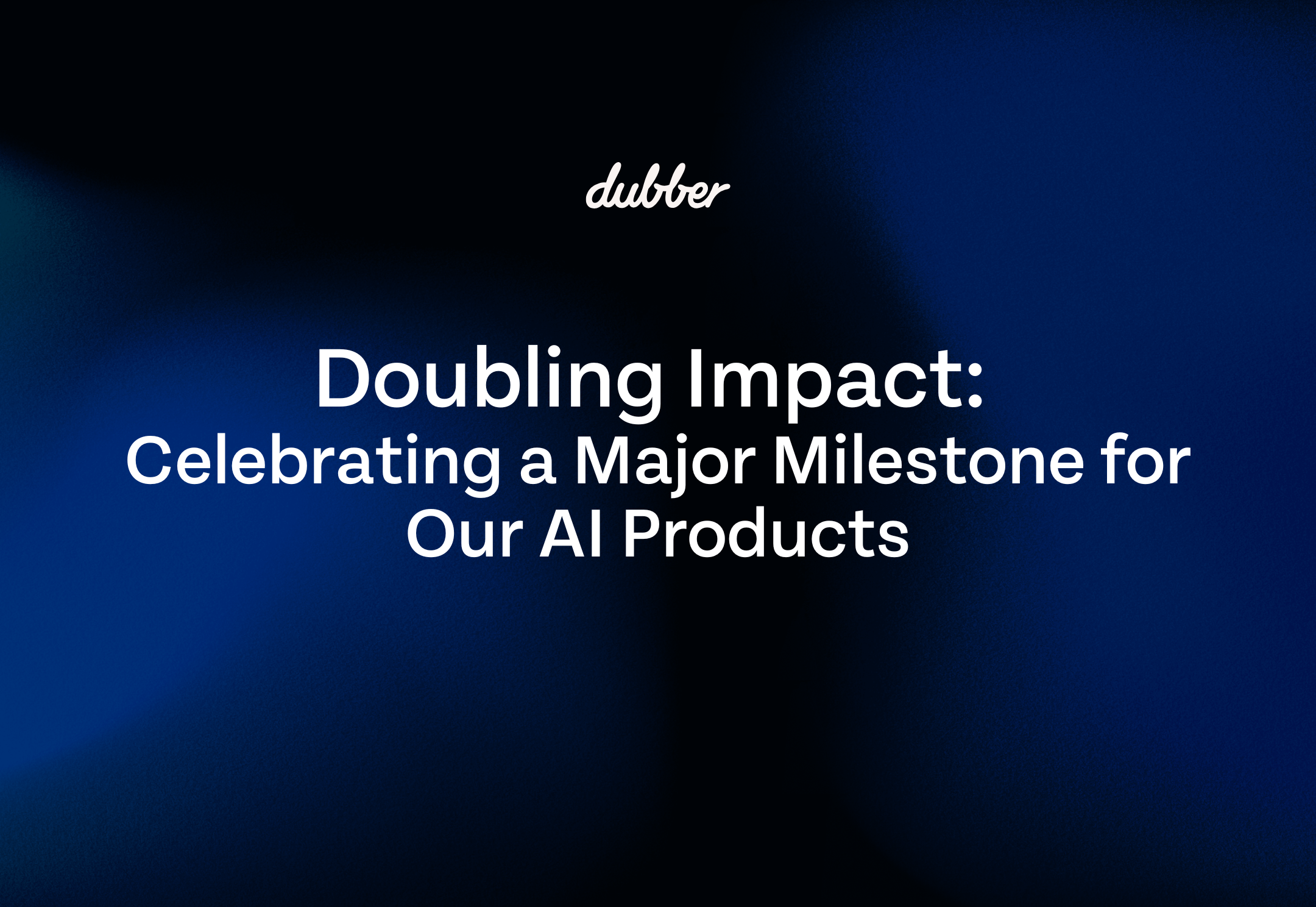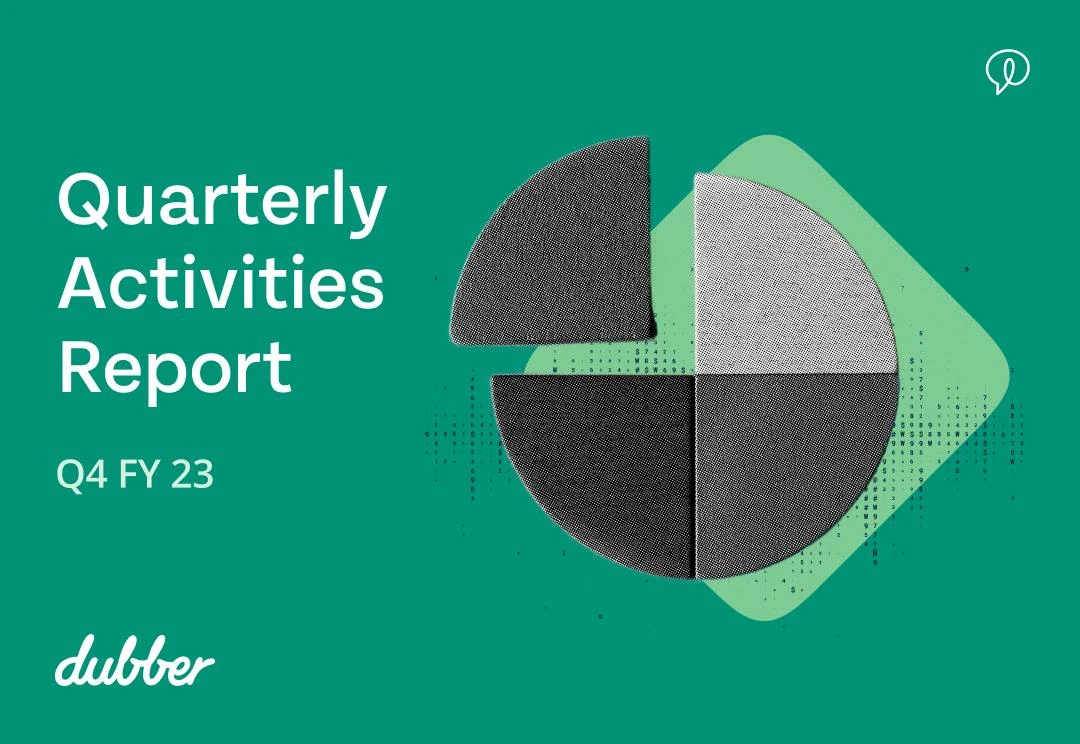
Dubber Corporation Limited (ASX:DUB) the leading conversational intelligence and unified recording platform for service providers and their customers globally, today released our Q4 FY23 quarterly report.
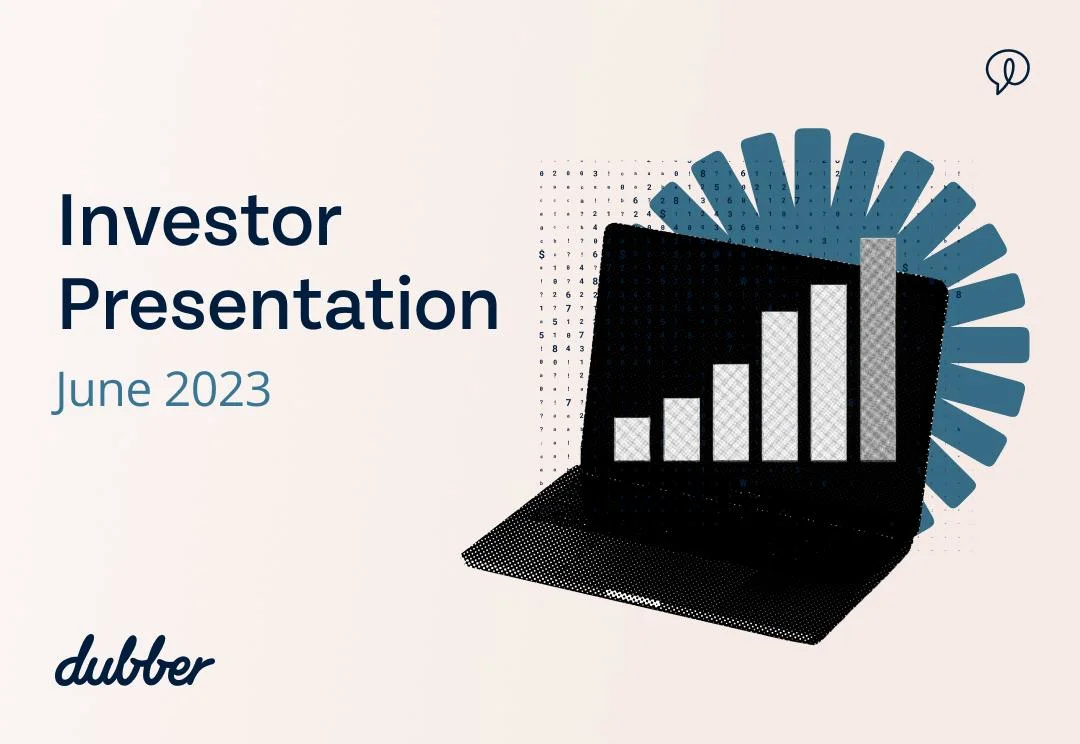
We had the opportunity to take Shareholders through Dubber’s investor presentation and why we are so excited about the opportunity ahead of us.
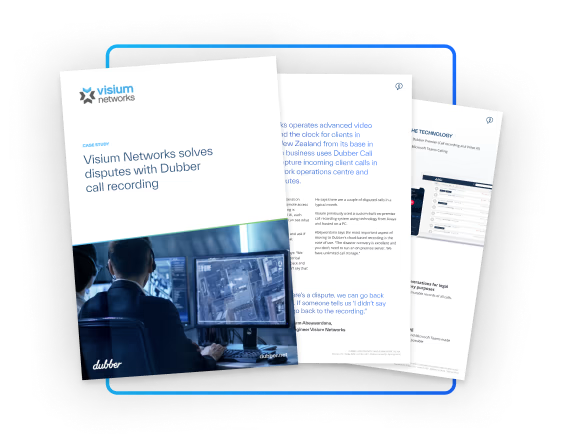
“With Dubber, if there’s a dispute, we can go back and review the calls. If someone tells us ‘I didn’t say that’ we can go back to the recording.” Charm Abeywardana, Lead IT Engineer, Visium Networks
Learn how Visium Networks improved dispute resolution by quickly searching, retrieving and replaying disputed calls
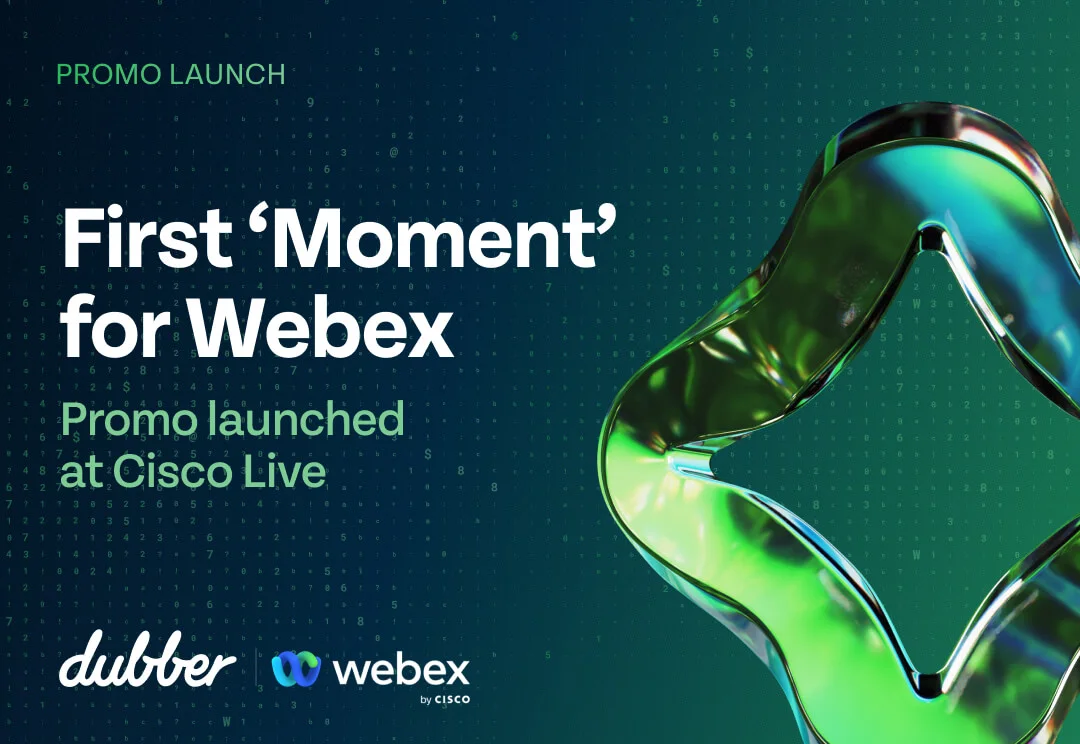
Dubber, the global leader in network based conversation intelligence and capture, launched last week Dubber “Moments”, a revolutionary AI product designed to redefine what individuals and organisations expect from their communications.
Dubber is the capture capability provided as a standard feature in Cisco Webex Calling and UCMC via the ‘Dubber Go’ feature and the company sees Cisco Live in Las Vegas, as the perfect opportunity to announce the release of the first Dubber Moment – Complaints, supporting Webex and the Cisco collaboration product suite. ‘Moments’ has the potential to revolutionise the user experience and drive tangible accretive benefits for customers and the Cisco sales channel.
Leap forward in AI
Going beyond the words and identifying the context within the conversation, Dubber has advanced AI to deliver actionable insights immediately when activated.
Dubber Moments is a growing family of out of the box capabilities, with the first being the ‘Complaints Moment’, which focuses on improving interactions between a business and its customers. This moment automatically detects a complaint and other relevant intelligence with the call or video so that a user can understand a single complaint, but also correlate across an entire organisation for a much deeper business insight.
With the use case being applicable for all businesses, Dubber has built the functionality to accommodate a light user or somebody looking to drill deeper into the data. As the insights are delivered out of the box, none or minimal training is required to understand the results.
Furthermore, various enhancements have been made to the Dubber AI functionality. Users are no longer required to manually scroll through transcriptions to comprehend the context of a conversation. Instead, we now offer a succinct summary for each conversation. Additionally, conversations are presented in the form of chapters, where the key topics discussed in each chapter are highlighted, enabling users to quickly locate the desired content. Moreover, the sentiment analysis has been improved, facilitating a better understanding of the changes in sentiment throughout the entire conversation.
Available via CCW
This is a first release of its kind that can provide immediate access to insights from the moment it is switched on for any Webex or Cisco collaboration suite solution.
Sellers of these services within the Cisco community can now include a value added solution without adding any deal complexity or risk, with a clear customer benefit that can only help expand an addressable market, drive new deals and expand their value.
Adding Dubber Moments is a seamless and easy upgrade from Dubber Go recording which is embedded in every Webex Calling and UCMC subscription.
The new feature will be available via CCW within the ‘Dubber Premier’ package from today and the soon to be released ‘Dubber Insights’.
Promotion
Dubber believes that this new functionality can benefit any business. To increase adoption, a range of promotional campaigns are launching today for 3 months to Cisco sellers and partners to help drive uptake and adoption.
If you’re attending Cisco Live, we recommend that you visit the Dubber team to understand how you can provide this new functionality to your customers. Also, please email us at getmoments@dubber.net if required.
About Dubber:
Dubber, the global leader in network based conversation intelligence, offers cutting-edge solutions designed to enhance communications for end users and benefit our Communication Service Provider (CSP) partners. Listed on the ASX, the company’s innovative cloud platform connects to over 170+ CSPs, capturing crucial information from voice, video, chat, and SMS data, also known as “Moments.” By harnessing advanced capture and AI technologies, Dubber transforms these moments into valuable business insights, enabling CSPs to differentiate, innovate, and monetise their networks.
For more information, contact:
Dubber Investors and APAC Media
Terry Alberstein terry@navigatecommunication.com.au
+61 (0) 458 484 921
Dubber Americas and EMEA Media
Jake Galland – Account Manager, TFD, jake@wearetfd.com
+447780866874
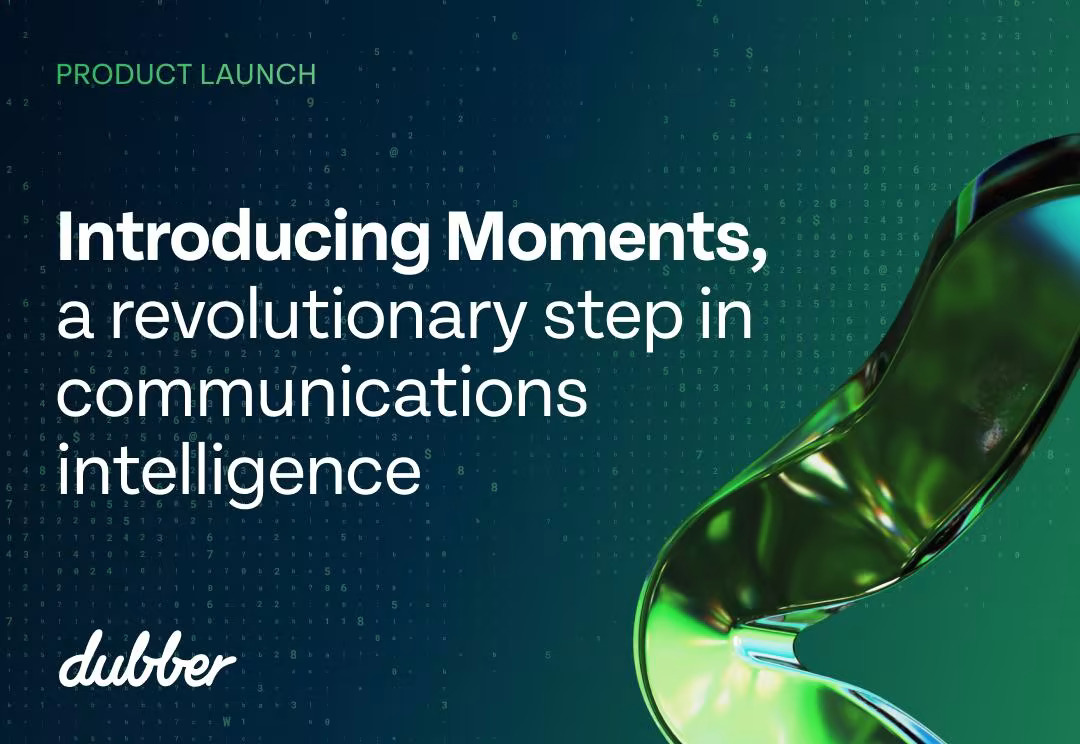
Dubber, the global leader in network based conversation intelligence and capture, has launched ‘Moments’, a revolutionary AI product designed to redefine what individuals and organisations expect from their communications and bring a new level of engagement between Dubbers 170+ global service provider Partners and their customers.
Changing Communications Forever
Since its founding in 2011, Dubber has consistently been at the forefront of pioneering solutions for Communication Service Providers and their customers. Today, it supports over 170 service providers and thousands of businesses across the globe by capturing and analysing conversations at volume across an entire network. The Dubber vision has been to move beyond traditional transcription alone towards addressing all modern business needs with the development of actionable, meaningful insights that can truly inform business strategies directly from the Service Provider network.
In response to these evolving demands, Dubber has released their out of the box solution family called ‘Moments’. This growing suite of features, powered by advanced AI and conversation intelligence, goes beyond the words and identifies the context within the voice conversation.
A single identified ‘Moment’ provides immediate benefit within a conversation, but when correlated across an entire organisation it creates amazing ‘Insights’. Employing data visualisation, Insights provides an intuitive snapshot of communication patterns and trends, transforming complex data into understandable intelligence for individuals and all sizes of business.
Future product roadmap releases will include a range of new ‘Moments’ that will help organisations to improve customer experience, enhance the performance of individuals, teams and improve employee engagement.
Decoding the Conversation
Following research into business-critical conversations, led by Dr. Iain McCowan, head of Dubbers AI Labs, the initial rollout will begin with the ‘Complaints Moment’, which pinpoints customer complaints and related topics within conversations. This ‘Moment’, part of the customer experience family of ‘Moments’, enables all organisations to promptly gain insights into customer grievances and handle them effectively.
Following this, ‘Actions Moment’ will be launched as a network feature, enhancing Dubber’s technology by detecting commitments made during conversations and converting them into tasks or reminders which has the ability to revolutionise the relationship with service providers and their customers.
The Revolution of Communications
With Communication Service Providers globally facing the challenges of commoditisation and ongoing cost pressures, it’s smart to consider new ways to leverage their networks, build new revenues and delight customers at the same time. Dubber enables service providers to consistently deliver innovation and value to their customers, helping them to understand and action intelligence based on outcomes produced through Dubber ‘Moments’ directly from their networks.
Steve McGovern, CEO of Dubber, stated, “We have been promoting a view for many years that AI will be a part of every telephony service and have built the Dubber platform to enable that eventuality. Dubber is designed specifically for Service Provider delivery as opposed to direct end user integration since we believe that the network is the source of any communication and the SP’s have the ability to provision, bill and support at scale.
To us, it just makes sense.
With the launch of ‘Moments’ we’re taking a significant step towards fulfilling that philosophy and fundamentally transforming communications. Despite the evolving ways in which we communicate, the core nature of conversations remains unchanged. There are always key moments within a conversation that yield new intelligence, inspire action, or deepen understanding. ‘Moments’ captures these pivotal points from any conversation on the network and transforms them into insights, delivering tangible business value and empowering service providers to redefine their offerings directly from their networks.”
Stuart Pritchard, Vice President, Optus Enterprise, speaking at the launch of ‘Moments’ said, “AI is becoming broadly part of our lives and customers are expecting to seek benefits from it. When AI can be used to directly solve business challenges, effectively out of the box, it simplifies the customer’s decision making and assists our sales teams. Currently, Dubber is assisting Optus in a special campaign that promotes the Dubber AI functionality around automatically detecting complaints for organisations and summarisation of calls for each user.”
McGovern added, “At Dubber, AI isn’t just a buzzword – it’s the key to unlocking the value of conversations happening across service provider networks. In effect, we are bringing the network to life enabling the content and packaging it into valuable outcomes which can be accessed via Dubber’s applications, via direct network based notifications or via API.
With the unprecedented volume of data available to train our Dubber AI engine, we’re turning every conversation into a chance to extract valuable moments that can enhance customer understanding, elevate employee experience, and identify product improvement opportunities.”
Find out more about ‘Moments’ here.
About Dubber:
Dubber, the global leader in conversational intelligence, offers cutting-edge solutions designed for CSPs to get the most out of their data. Listed on the ASX, the company’s innovative cloud platform connects to over 170+ service providers, capturing crucial information from voice, video, chat, and SMS data, also known as “moments.” By harnessing advanced capture and AI technologies, Dubber transforms these moments into valuable business insights, enabling CSPs to differentiate, innovate, and monetise their networks.
For more information, contact:
Dubber Investors and APAC Media
Terry Alberstein terry@navigatecommunication.com.au
+61 (0) 458 484 921
Dubber Americas and EMEA Media
Jake Galland – Account Manager, TFD, jake@wearetfd.com
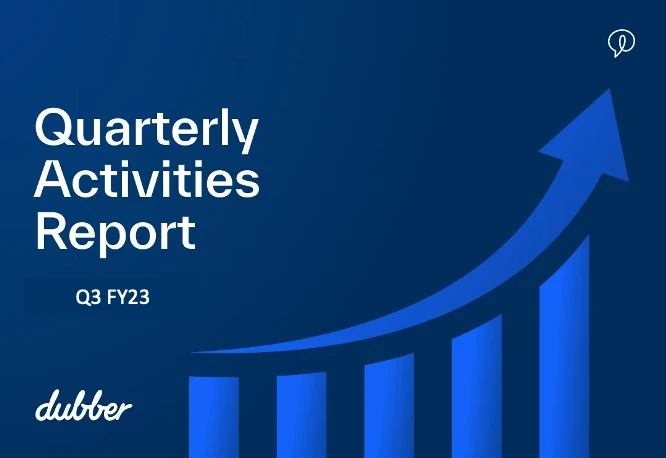
Melbourne, Australia: 30 April 2023 — Dubber Corporation Limited (ASX:DUB), the leading unified call recording and conversational intelligence platform to global telecommunication service and solution providers, today released its 3Q FY23 Appendix 4C and is pleased to provide this Quarterly Activities Report
3Q FY23 Snapshot
- Strategy alignment and restructuring programme largely completed and on track to deliver $5m+ of quarterly cost savings from FY24 financial year, with $1m already realised and $2m to be achieved in Q4 of FY23.
- Adjusted Recurring Revenue1 of $7.4m up 10% on Q2 FY23 and 17% on pcp.Operating cash receipts for the quarter were $8.1m, and $25.9m for FY23 YTD, up 12% on pcp.
- Approximately $6m in additional revenues already committed for FY24from existing communication service provider agreements.
- Cash operating costs excluding one-off payments reduced in the quarter by $1m.Cash on hand at 31 March 2023 was $40.2m.
- Vodafone UK customer migration commenced.
- Alianza chooses Dubber for its UC platform for 200 service providers.Cisco accelerates sales of Webex Calling to in excess of 10m subscriptions, each one of which will feature ‘Dubber Go.’
- Expansion of communication service provider footprint into Central and South America.Dubber AI (Artificial Intelligence) enabled packaged solutions with out-of-the-box benefits now available via communication service providers.
- Neil Wilson appointed as Chair.
- Andrew Demery appointed as CFO.
- McLaren Formula 1 driver Oscar Piastri appointed as Dubber global ambassador.
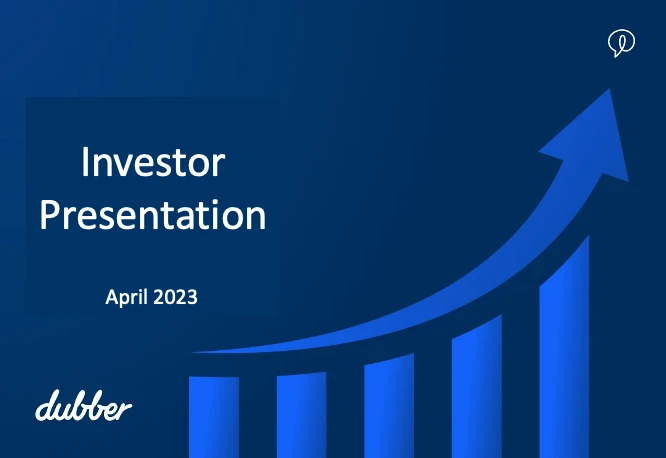
Today we had the opportunity to take Shareholders through Dubber’s investor presentation and why we are so excited about the opportunity ahead of us.

MELBOURNE, Australia – 29 March 2023 – Dubber Corporation Limited (ASX: DUB), the global platform that is driving revolutionary change in the communications industry, and Australian F1 driver, Oscar Piastri, are proud to announce an exciting partnership that unifies their shared passion for technology and data-led improvements.
Both Oscar and Dubber operate in fields where the smallest of improvements can shape the ultimate success.
Dubber was founded in 2011, the same year that Oscar entered his first karting races in Melbourne, and both are now challenging on the world stage in their respective fields.
Oscar secured a record-breaking run of three consecutive championship titles in Formula Renault Eurocup, Formula 3 and Formula 2 before entering the first stage of his Formula 1 career with McLaren. His debut F1 season, where he lines up as the youngest driver on the grid, represents the culmination of a 12-year dream that began in the Melbourne suburb of Brighton.
Oscar is returning to his home city, also the home of Dubber’s global headquarters, for the Australian Grand Prix at Albert Park on 2nd April 2023.
Dubber and Oscar’s partnership includes branding, messaging and customer engagement as he competes in his debut season on the biggest stage in motorsport which encompasses 23 Formula 1 races in the 2023 calendar.
In F1, more than any other sport, a commitment to improve technology and processes is paramount to success. Performance is heavily reliant on insights and data that can power critical competitive advancements.
Likewise Dubber enables its global Service Provider partners and their customers to improve their performance and competitive advantage with data and insights, in our case, from conversations and customer interactions.
Neil Wilson, Chairman of Dubber, commented: “Dubber has been working with Oscar and his team over the last year to develop a partnership which reflects our aspirations and values. Oscar is a tremendous talent backed by hard work, ambition and determination. We also share the common goal of turbocharging performance in our respective fields through technology and analytics where the slightest insight and improvement can make a world of difference. We look forward to Oscar passing on some of those insights to our customers.
“We are delighted to be partnering with Oscar as he embarks on the start of his F1 journey. In a visit to our Melbourne headquarters in January, Oscar inspired our team with his vision and commitment to delivering the highest possible standards to the Dubber team.
“We’re all behind him and will be following his progress closely.”
Oscar Piastri, F1 driver, added: “I am massively grateful to Dubber for their backing and support. I am thrilled to be aligned with such a cutting-edge and forward-thinking company and can only thank all the Dubber family for the warm welcome they have given me.
“It means a lot to me that the team at Dubber want to be part of my journey and will be supporting me all the way.”
About Dubber:
Dubber enables Service Providers to unlock the potential of the network – turning every conversation into an exponential source of value for differentiated innovation, retention and revenue. Listed on the ASX, Dubber is the clear market leader in conversational intelligence and capture – embedded at the heart of over 175 service provider networks.
For more information, please visit Dubber at www.dubber.net or contact:
Dubber – Investors & APAC
Terry Alberstein
terry@navigatecommunication.com.au
+61 (0) 458 484 921
Dubber – EMEA & The Americas
Stephanie Forrest – CEO, TFD
dubber@wearetfd.com
+44 7951 786435

Dubber Corporation Ltd (ASX: DUB) (Dubber or Company) is aware of media and regulatory reports indicating a potential closure of Silicon Valley Bank (SVB) operations in the US and UK. The Company is continuing in its efforts to recover these funds and there is no material impact on Dubber’s liquidity position or operations as a consequence of this event.

Dubber Corporation Ltd (ASX: DUB) has completed a review of efficiencies and costs across its global operations and will implement a restructure of its business. This is expected to deliver in excess of $5 million in savings per quarter without impacting the Company’s revenue growth potential or customer service.

